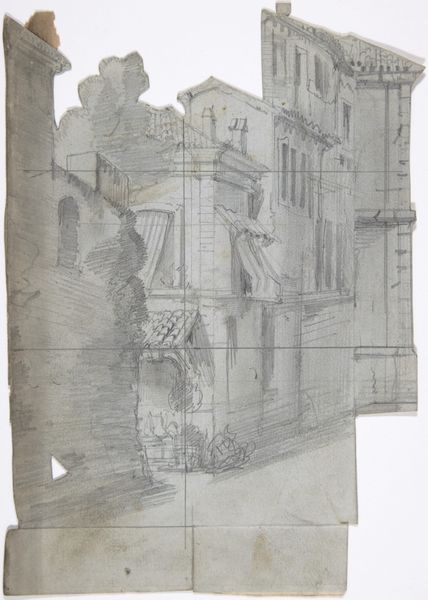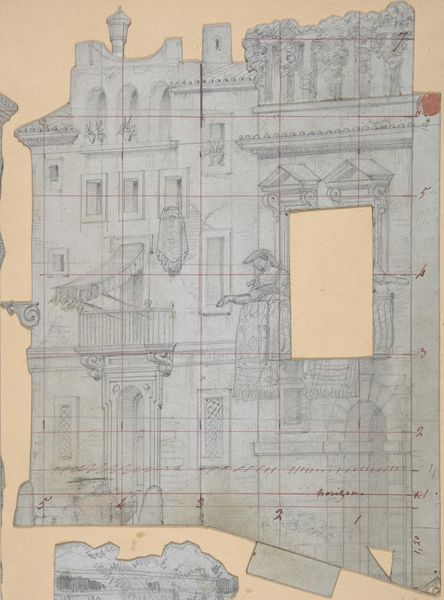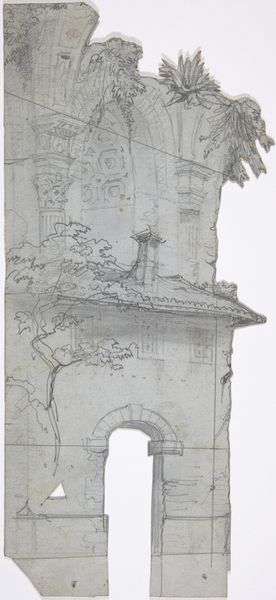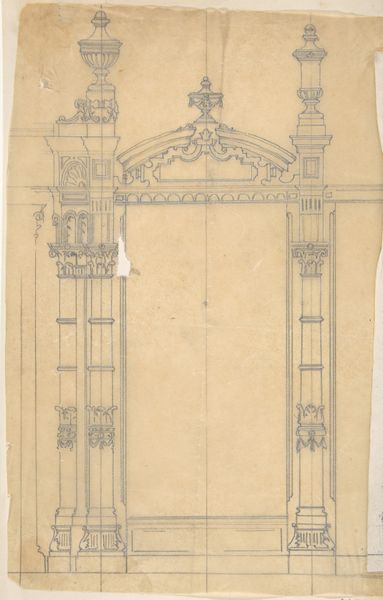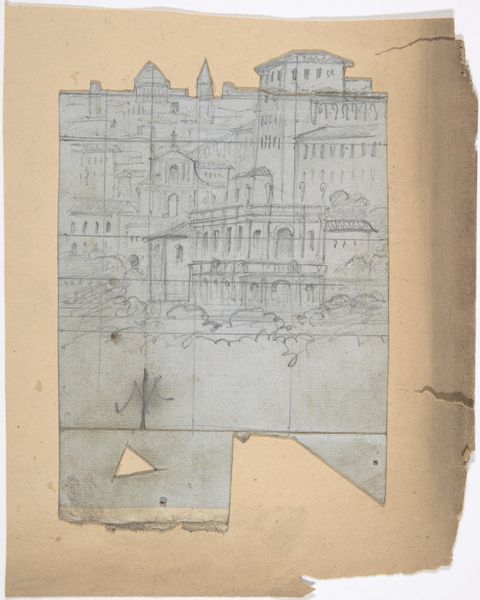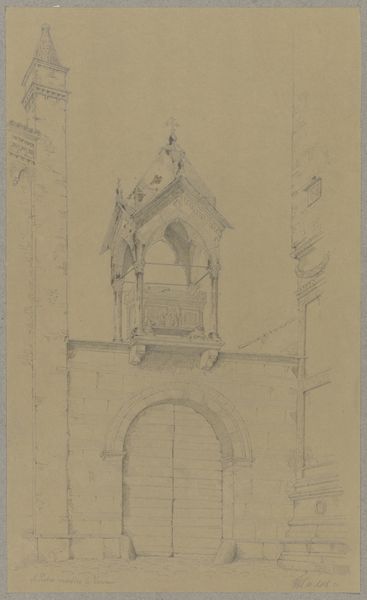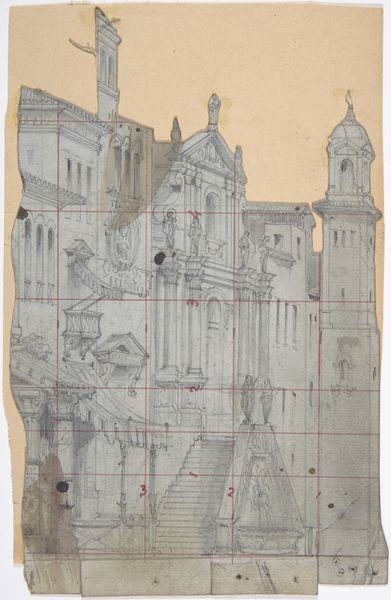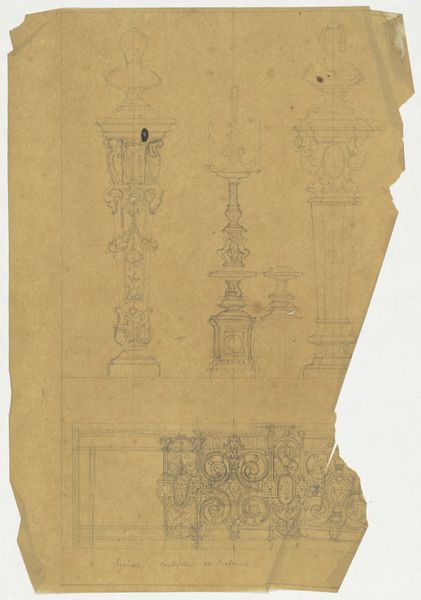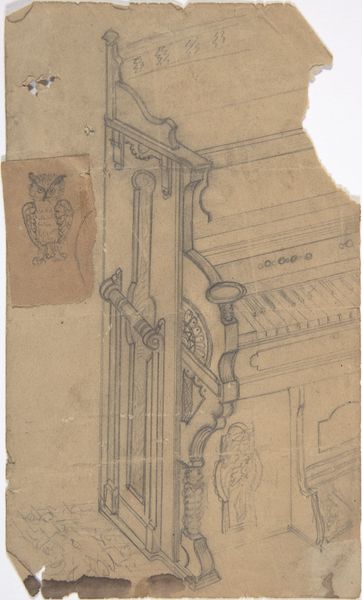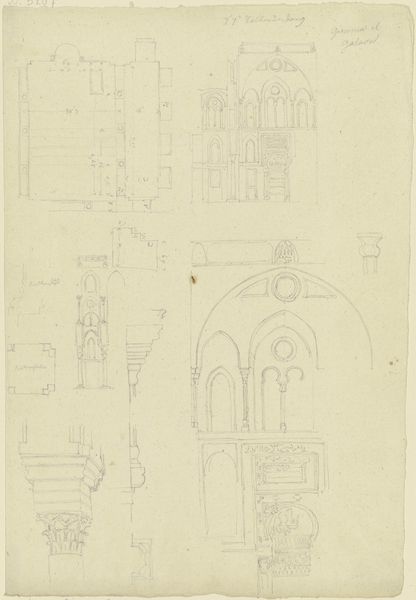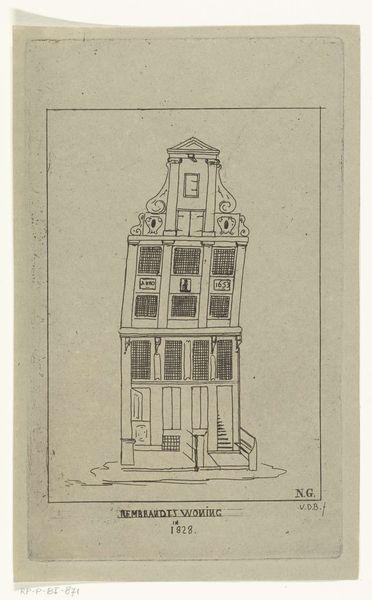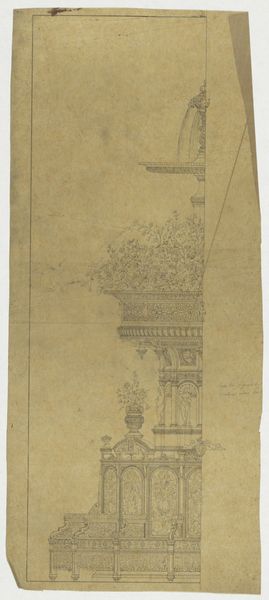
Design for a Stage Set at the Opéra, Paris: Building Façade 1830 - 1890
0:00
0:00
drawing, print, etching, paper, pencil
#
drawing
#
neoclacissism
# print
#
etching
#
landscape
#
etching
#
paper
#
pencil
#
history-painting
#
academic-art
Dimensions: Irregular sheet: 11 x 7 15/16 in. (27.9 x 20.2 cm)
Copyright: Public Domain
Curator: This is Eugène Cicéri's "Design for a Stage Set at the Opéra, Paris: Building Façade," likely created between 1830 and 1890. It's a pencil, etching and print on paper. Editor: My first thought? There's something deeply melancholic about this sketched façade, like a memory fading into the page. It's as if the grandeur is only partially recalled. Curator: It's an interesting choice for a stage set, actually. The academic art style emphasizes history and established order. Editor: Precisely. In visualizing Cicéri's rendering of the building’s elevation—especially during a tumultuous period when art and the artists reflected both neoclassical order and a growing wave of Romanticism. Where does it position opera at the time? A spectacle for a bourgeois, or a voice for revolutionary romanticism? Curator: One wonders about that grid behind the image. The way the cross stands removed from the building façade suggests two opposing ideologies? Or is there an acceptance through its placement? The stage, after all, exists in a world of its own making. Editor: The deliberate rendering of each stone in painstaking detail also makes me wonder: what kind of social order is it meant to uphold, what is the symbolism of placing god above this order, what kind of dialogue with faith and belief, the design tries to orchestrate in the viewers minds? Curator: It’s strange how something so seemingly permanent can feel so impermanent, so... theatrical. As though it knows its only purpose is to fade once the curtain falls. Editor: And, dare I say, that the emptiness that pervades Cicéri's sketch feels intentional. Like it leaves room to negotiate possibilities of reality with each new opera performed. Curator: In the end, I am taken with the way that such linear constraints can evoke such powerful emotions and meaning. Editor: Exactly. An exercise in controlled chaos and creative exploration of belief. The play of structure versus impermanence, permanence and faith. Cicéri sketches with purpose, provoking deeper discourse in both form and its social content.
Comments
No comments
Be the first to comment and join the conversation on the ultimate creative platform.
